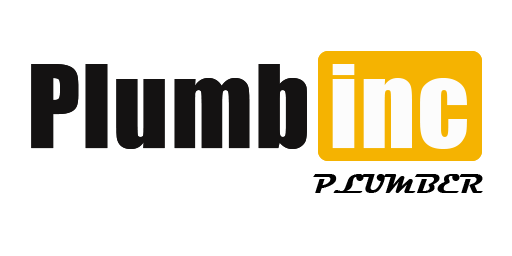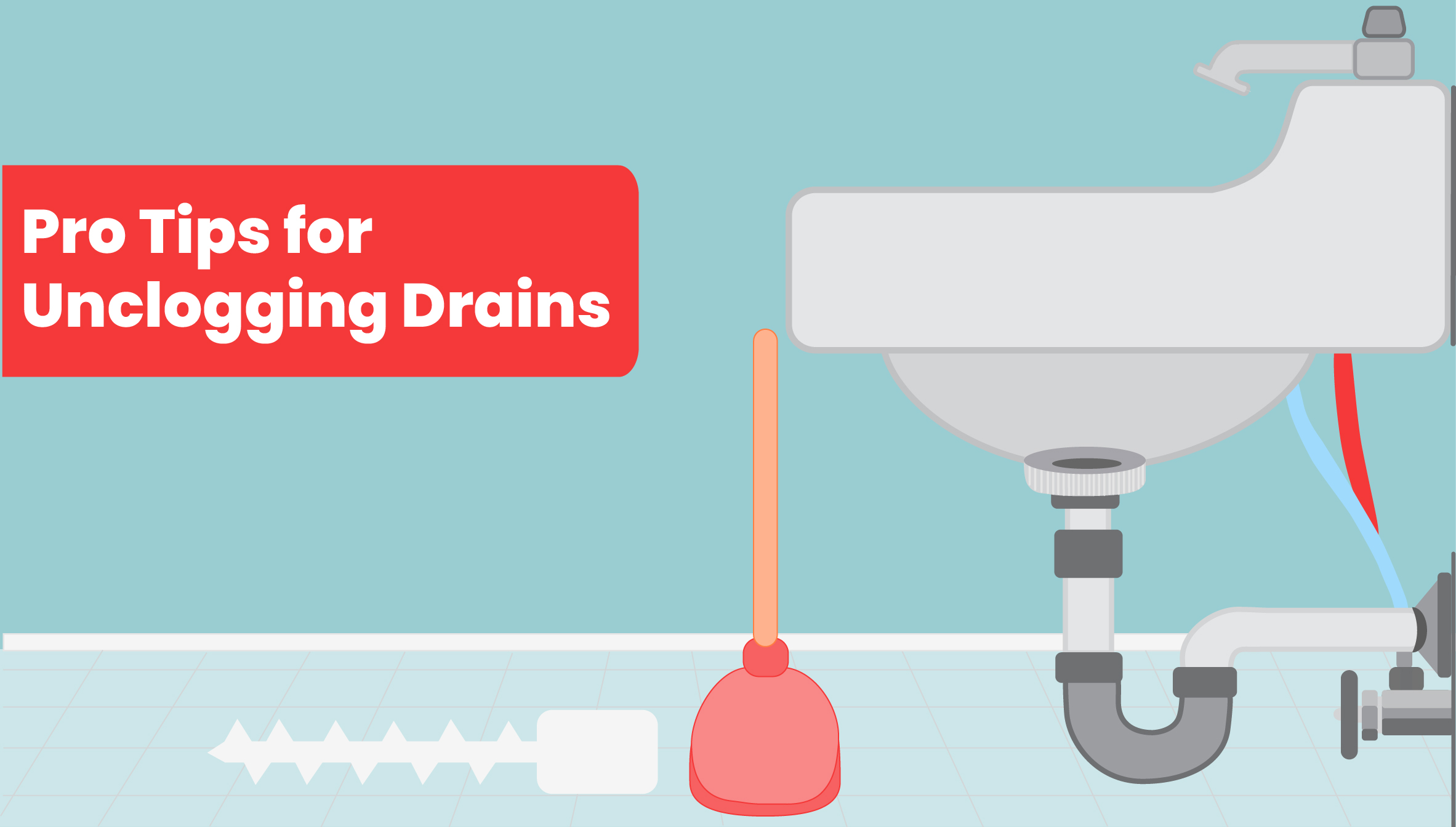Key takeaways to drain cleaning
- A slow- or non-draining sink, shower, or tub is a sign of a drain blockage
- Most drain clogs can be prevented by taking simple, inexpensive precautions
- You can often clear a clogged drain yourself, but you’ll need to call a plumber if the blockage doesn’t go away
Enjoying a shower, flushing the toilet, and washing dishes are everyday activities we take for granted. But if you have a clogged bathroom or kitchen drain, you face a temporary inconvenience or an expensive plumbing emergency.
But before you call a plumber at Plumb Inc to unclog your kitchen or bathroom drain, you can try doing it yourself. Many clogs can be fixed with simple, inexpensive DIY techniques and tools. Even better, the most common types of blockages can easily be prevented.
Here are plumbing basics and instructions for avoiding and clearing clogged bathroom and kitchen drains.
How Drains Work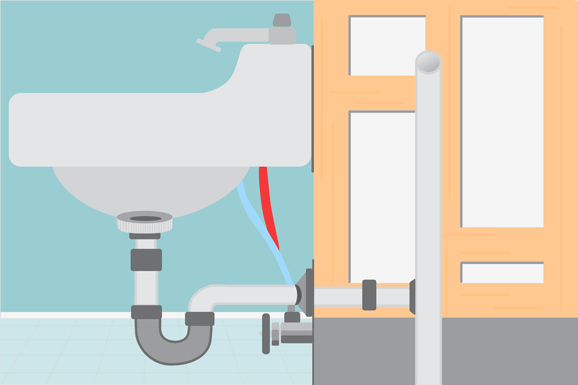
Sinks, bathtubs, showers, and toilets are all connected to your home’s drainage system, which connects to the sewer or septic system. The “P-trap”—a U-shaped pipe under a sink or built into a toilet—allows water and waste to pass through but holds a little water to prevent smelly sewer gases from coming back up.
Why do drains clog?
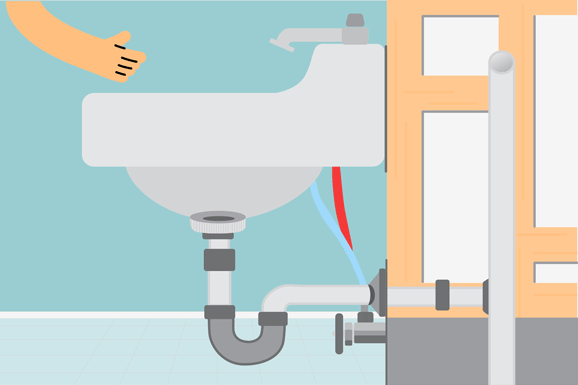
A clog often forms when gunk and debris—such as grease, hair, soap scum, tissue, or small objects—collect and solidify. This often happens in the P-trap due to its shape.
Hair, grease, and soap can get stuck in a sink or bathtub’s drain-stopper mechanism.
A clog can form anywhere; gunk, and debris like grease, hair, or soap scum can collect and solidify in the P-trap. For example, hair can get caught on the levers inside the drain drain drain’s closing mechanism, pushing the drain stopper up to drain the sink or pulling it down to fill and hold water. Anything that fits through a drain opening, including hair, grease, soap scum, small objects, food, or tissue, will form a clog if it can’t pass through the closing mechanism or P-trap. These stuck items cause the drain to run slowly and eventually build up and block the drain.
Here are the most common types of drain clogs:
- Hair: Built-up hair is probably the most common cause of a slow-draining bathroom sink, shower, or bathtub. A slow drain can also cause soap scum to congeal over several months, adding to the clog.
- Grease: When grease or oil enters a drain, they can settle in the P-trap or coat the wall of the pipes. Cold water passes through the drain, causes the grease to solidify into a clumpy, gooey mess. (According to local plumbers at Plumb Inc, clogged kitchen sink drains and garbage disposals are the No. 1 reason people call plumbers after Thanksgiving.) Other debris, such as hair or food particles, can get trapped in the grease and solidify even more over time.
- Soap: Soap clogs tend to collect in sinks that are infrequently used, such as in a guest bathroom or where soap is used with very little water. Soap residue builds up in the trap and congeals.
- Small objects: Just about anything that can fit through a drain opening—such as a Lego brick, cotton swab (Q-tip), or chicken bone—can clog a drain. Even if the object itself doesn’t initially clog the drain, other debris or gunk will attach to it and eventually cause a blockage.
- Paper and fabric products: Paper towels, tissues, sanitary napkins, diapers, and cloth items can clog a toilet. So, surprisingly, can “flushable” wipes—they don’t disintegrate quickly like toilet paper, so they can get stuck or build up over time, causing a blockage.
How to unclog the drain
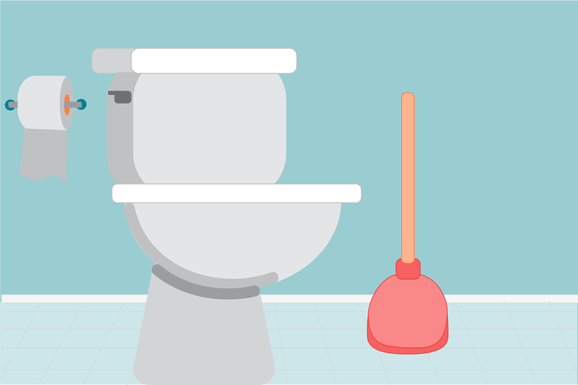
Unclogging a drain is a DIY project if you have the proper tools or products (all available at home-improvement stores, supermarkets, and online) and don’t mind getting your hands dirty. Here are some methods to try.
Plunger
A plunger is one of the most effective tools, especially for a toilet clog. (It won’t work on hair clogs.) Buy a high-quality plunger that achieves a good seal on the drain opening; they cost $15–50. (You can use a full-size plunger on a sink, but specialty sink plungers are also available for $10–30.)
How to fix a sink clog with a plunger:
- All sinks have a small drain in the upper part of the bowl to prevent it from overflowing. If you don’t see it on the faucet side of the sink, look for it on the opposite side. It could be under the rim.
- Plug this overflow drain with a rag to prevent air from escaping. Put the stopper in the opposite sink drain if you have a double kitchen sink.
- Push down on the plunger, then briskly pull up (this is when the real dislodging action takes place). You may have to do this several times. Repeat the process, making extra effort on the upstroke, until the water drains freely.
How to fix a toilet clog with a plunger:
- You’ll need a full-size plunger that fits over the entire opening at the bottom of the toilet bowl. There should be enough water in the bowl to cover the bottom of the plunger, but not so much that it will overflow during plunging. (You can add or remove water with a cup or other container.)
- Push down on the plunger, then briskly pull up. As with a sink, you may have to do this several times. Repeat the process, making extra effort on the upstroke, until the water drains freely.
- Allow the water to flow, then flush the toilet a few times to ensure the blockage has completely passed. If this doesn’t empty the toilet, the clog must be removed with a drain snake.
Drain snakes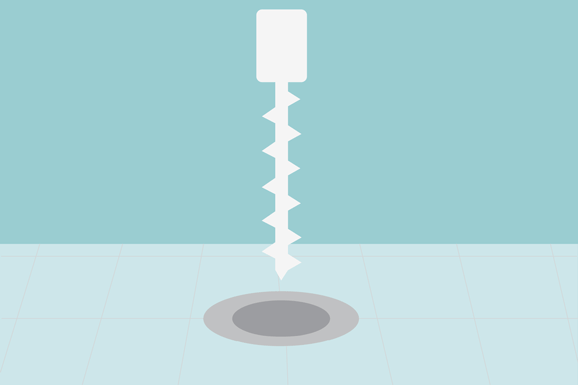
If the plunger doesn’t get the water flowing, a thin, flexible auger, known as a drain snake or plumber’s snake, may do the trick. (If you don’t have a snake handy, you can try straightening out a wire coat hanger and using it to loosen or remove the blockage—but remember that this can easily scratch a porcelain bowl.) You may have to insert the snake several times. Small objects or hair blockages may come out a bit at a time.
Basic plumber’s snakes generally cost $15–50. More expensive versions, powered by an electric drill or built-in motor, cost $60–400 (but can sometimes be rented from home-improvement stores). Follow the instructions for the model you purchase.
Homemade Solutions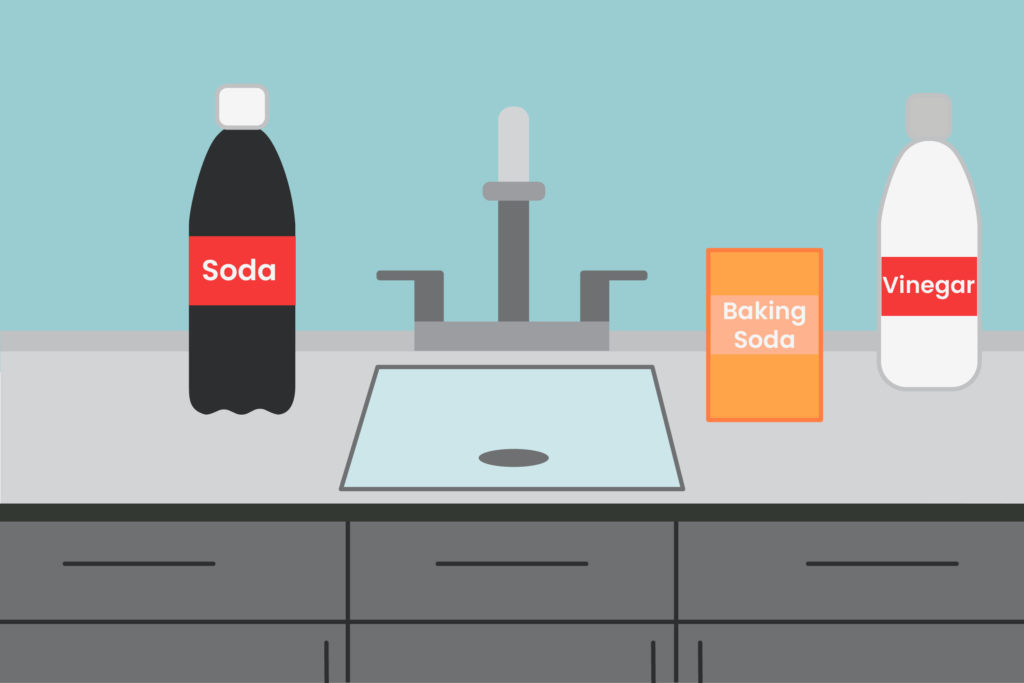
In a pinch, you may be able to fix a sink clog with items already in your pantry. Here’s how:
- Pour a pot of boiling water down the drain. This can loosen grease and food clogs, but not hair.
- If this doesn’t work, add ½ cup of baking soda, followed by 1 cup of white vinegar. The combination will foam up, potentially clearing out soap or grease. Adding a bit of salt can help loosen stubborn particles.
- Wait for any standing water to drain, then pour in a 2-liter bottle of Coke or another cola. Allow the soda to sit in the drain for a couple of hours (or overnight), then flush with hot water.
Chemical solutions
Liquid drain cleaners such as Drano or Liquid-Plumr contain chemicals that are heavier than water, so they flow through standing water until they reach the clog. They’re generally effective against most types of clogs, including hair.
Follow the manufacturer’s safety instructions to the letter for all drain-cleaning solutions. Remember that the caustic chemicals also react with iron or steel and, if used too often, can damage old metal pipes that may already have begun to rust. They also can damage a septic system, so check the product’s label to ensure it says specifically that it’s septic tank-safe.
If the chemicals don’t remove the clog, you’ll have to dismantle the drain or call a plumber at Plumb Inc.
Dismantling the P-trap
Since the P-trap isn’t a straight pipe, waste can accumulate and create a stubborn clog. Here’s how to remove it:
- Put on a pair of rubber gloves.
- Place a large bucket under the trap.
- Use a pipe wrench or tongue-and-groove pliers to loosen the nuts at each end. Pull the trap down to separate it from the drain pipes.
- Run water into the sink; it should drain into the bucket.
- Clean out the P-trap and reassemble it, tightening the nuts at each end.
- Run water to verify that it drains freely.
How to prevent hair clogs
Removable plastic, rubber, or stainless steel hair strainers or drain covers are the most effective defense against hair entering the bathroom sink, shower, or tub drain.
More permanent filters fit into the drain opening and catch hair below the surface. You can check and remove them for cleaning if the drain seems slower than usual. After a couple of cleanings, you’ll get an idea of how often—weekly, monthly, or longer—you should check the strainer. Drain covers and strainers typically cost less than $10.
How to prevent grease clogs
Keep the stopper-strainer in place when using the kitchen sink to prevent food particles from entering the drain. Always use a dish detergent and hot water to break down grease. And never flush leftover grease down the drain.
How to prevent clogs from solid objects
Use a drain cover or hair strainer. And don’t put anything in the toilet other than toilet paper—to prevent random objects from falling in, keep the lid down when not in use. If you have toddlers, installing a toilet seat lock can prevent them from tossing items where they don’t belong.
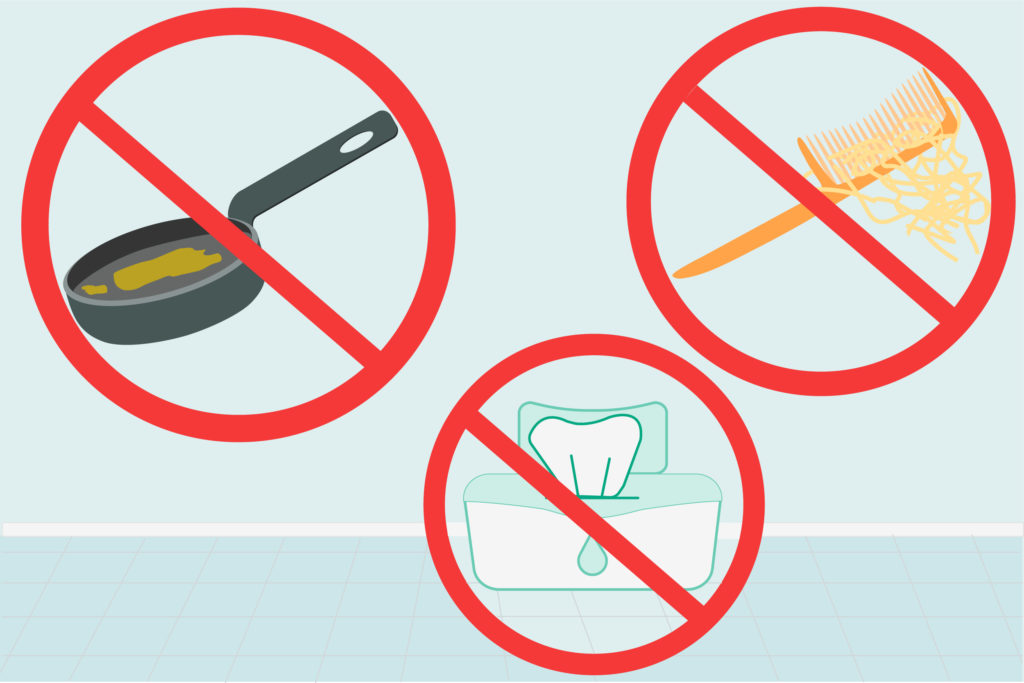
If you are not able to unclog it after you tried all these steps, we recommend searching for “plumber near me” or simply contact Plumb Inc
Drain Cleaning
-
Toilet
-
Sink
-
Shower
Hydro Jetting
-
Tree roots removal
-
Grease Removal
-
Camera Inspection
Emergency Service Fee
-
Leaks
-
Drain Clogs
-
No Hot Water
